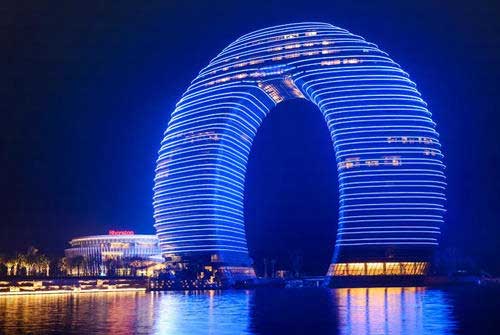 Manufacturers of Architectural LED Products Prioritizing Enhanced Brightness, in Addition of Energy Efficiency: PMR
Manufacturers of Architectural LED Products Prioritizing Enhanced Brightness, in Addition of Energy Efficiency: PMR
Worldwide sales of architectural LED products reached ~USD 7,136 Mn in 2018 according to a recently published study. As per the report, the global architectural LED products market is anticipated to grow by CAGR of ~14% year-over-year in 2019. Government regulations related to the construction of artistic buildings across various regions have been fueling the demand for efficient lighting systems from construction and building management companies. Governments in many countries have banned the usage of incandescent lighting products for improving energy efficiency and reducing CO2 emissions. Due to this reason, construction companies are encouraged to deploy LED lighting systems, following government regulations on low carbon emission and energy saving.
As per the report, factors such as increased lifespan of LED products, government regulations, decreasing cost of LED products, uniformity in the standards will continue to drive the growth of the architectural LED products market throughout the forecast period. Currently, businesses around the world are shifting from incandescent lights and opting for LED lights instead, as they are durable, efficient, and help reduce energy cost. Moreover, architectural LED products use about 50% less electricity than traditional incandescent lights, which makes them more power efficient.
As per the research study, the architectural LED products market is poised to create an incremental opportunity of ~ US$ 21,708 Mn throughout the forecast period. Conventional architectural LED products continue to account for major share of manufacturers’ bottom lines, in the view of increasing demand for strip LED products for cove lighting.
Demand Bolstered by Growing Smart Cities Projects
Government organizations are launching several smart city initiatives, which in turn is likely to increase the demand for architectural LED products, as they help reduce energy cost and cast unadulterated light, similar to daylight. Architectural LED products are available in a different colors and temperatures that are suitable for a range of applications. Moreover, increase in demand for energy efficient lighting solution and rising investments in smart city infrastructure such as roadways, parks, and commercial buildings will continue to favor the growth of the architectural LED products market.
Tier-1 Players to Account for 20% Revenue Share
The study opines that the global architectural LED products market is considered fragmented, owing to the presence of a large number of local players. The research study has segregated the market structure into three tiers: Tier 1, Tier 2, and Tier 3 for deep-down analysis. Tier-1 architectural LED product providers account for ~18%-20% of the overall market. Tier-1 vendors, are the most experienced and largest in the industry and have a vast regional coverage across the globe. These vendors are collaborating and partnering with new players in the market to expand their distribution channel. Tier-3 architectural LED product providers are fairly new in the market, and includes mostly local and regional players. As tier-3 players have a limited presence in the market, they constantly keep themselves updated with the latest technology and are growing at a rapid pace.
- For instance, in July 2019, the OSRAM Litch AG introduced high-power LEDs for general lighting with the Osconiq P 3030 that provides long life and excellent brightness and efficiency values in flashlights and work lamps.
- Similarly, in October 2018, Cree Inc., introduced its industrial lighting portfolio with the new XB Series Linear High-Bay luminaires. The series includes enhanced efficacy, extended life, which makes it an ideal solution for high ambient temperature, high ceiling, and high profile spaces.
This study highlights key opportunities in the architectural LED products market and finds that the market will grow at a CAGR of ~14.0% over the forecast period.
